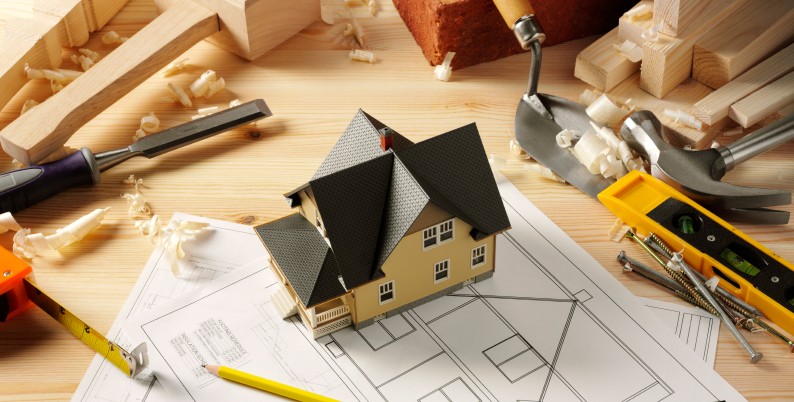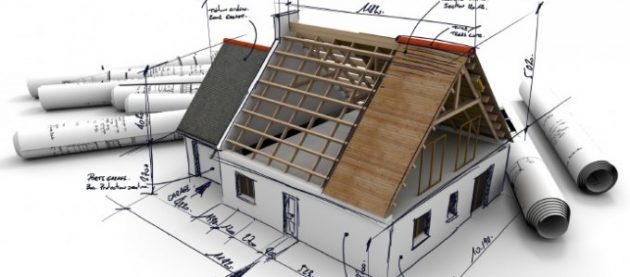Americans collectively spend over $400 billion on remodeling and repairing their homes every year. However, diving into demolition is one thing when you’ll get to enjoy those shiny granite counters and new soaking tub for years down the road. The question of “Should I renovate my house before selling?” requires more calculated thinking purely based on ROI and the marketability of your home in its current condition.
Let’s break down all the factors that help you weigh what you can afford, which types of projects have the best bang for your buck, and when you’re better off lowering the price of your home versus making big changes.
One of the most persistent questions about selling your home is whether you should renovate it before you sell. Sure, you want to sell it for more than you paid. But the truth is, the “right” answer is complicated because certain renovations will never raise the value of your home enough for you to break even on the cost. Here’s what you need to know when you’re asking, “Should I renovate my home before selling?”
What Do Home Buyers Want?
You’ll generally encounter two main types of buyers: people who want a move-in-ready home and people who want to fix or flip the property.
The average price of a move-in-ready house is $571,600. In contrast, the average price of a fixer-upper is $421,600 – a difference of $150,000. Buyers looking for a move-in ready house (who are buyers who like to see renovations) versus home flippers are looking for different things.
For home flippers, saving money is the main factor. Many who want to fix or flip the property simply like the house and the neighborhood – and some even think they’ll enjoy the work.
When you’re selling your home, you should make renovation plans based on which type of buyer you’re looking to attract. You need to make plans based on your:
- Timeline
- Budget
- Listing price intent
In other words, you may not want to launch a complete kitchen remodel if you plan to move in a month. Similarly, you should not expect to list your fixer-upper home for the same amount as the pristine, move-in-ready home next door.
Things To Consider Before Renovating Your House
You’ll want to consider two things before you decide whether you want to renovate your home:
Which improvements are worth the cost? The most high-return home value additions you can make to your home include upgrading your interior paint, touching up your landscaping, upgrading bathrooms, remodeling your kitchen, and improving energy efficiency.
Which improvements will deliver the greatest return on your investment? You’ll also want to consider these improvements, which deliver the greatest return: improving energy efficiency, fixing up the exterior, budget-friendly kitchen remodels, bathroom remodels, paint, flooring fixes, and adding space.
Timeline For Listing Property
The timeline for listing your property determines the number and scale of your remodeling projects. How much time do you have on your hands before you move? If you don’t have a lot of time, check out our list of short-term improvement projects – each one could take a weekend to complete:
- Paint rooms
- Add crown molding
- Rewire an entry light
- Renew old flooring with paint
- Add interior shutters
- Paint kitchen cabinets
- Brighten your deck
- Long-term renovation projects could involve getting a contractor over several weeks:
- Basement remodeling (8.5 weeks)
- Kitchen remodels (6 weeks)
- Custom cabinet installation (5 weeks)
- Bathroom changes (4 weeks)
- Deck installation (2.5 weeks – but can take longer, depending on weather)
- Roofing installation (1 week)
In other words, if you’d like to list the home in 6 weeks, you might squeak by with a kitchen remodel but not a complete basement remodel. Weigh the pros and cons of each remodel option and make choices accordingly.
Location And Market
What have comparable homes sold for in your area and how many days have they been on the market? That may help you determine your renovation approach.
Comparative Market Analysis: A Guide can help you. A comparative market analysis is a tool that real estate agents use to estimate the value of a specific real estate property by evaluating similar ones that have recently sold in the same area. Find comps, or homes like your home, to help you determine how hot your local market really is.
If it turns out that your home is in a sleepy market, renovating it could make sense. On the other hand, if you are guaranteed to sell your home inside a month, you may want to bypass huge renovations and sell fast – especially if you’re on a timetable.
Your neighborhood may require you to spend some money to be a step above everybody else, such as in areas with a lot of new construction.
Consider Using A Listing Agent
A listing agent can help you pinpoint which areas in your home will deliver the biggest renovation bang for your buck. For example, a real estate agent may be able to tell you exactly how much you can sell your home for if you redo the kitchen and put a few scenarios in front of you.
They’ll consider costs beyond the neighborhood, too, such as the property’s age, condition, features, lot size and more. A listing agent also has a pulse on the conditions of the local and national markets and how that affects your specific home as well.
Calculate The Return On Investment
Do your best to calculate your return on investment by using a simple addition problem:
After Repair Value = Property’s Current Value + Value of Renovations
For example, let us say your property’s current value is $150,000. You do $50,000 of repair work and the after-repair value equals $200,000.
Note that this is an ideal calculation. However, it’s important to keep in mind the cost vs. value mindset when it comes to renovations. What does this mean? It means how a remodeling project is perceived depends on more than just the straight amount you spend on renovations – it also depends on a variety of factors – the condition of the rest of the house, the value of similar homes nearby and even how much other homes in the area fluctuate in value. In addition, home renovations rarely generate profit in a seller’s market.
Renovation Projects That Increase Value
Buyers are reliably drawn to updated kitchens and updated bathrooms, but keep in mind that renovations should be able to withstand market changes and a variety of tastes. Here are the projects that add the most value and how much you recoup the costs:
Kitchen renovation: The average cost for a minor kitchen remodel nationally is $23,452, and homeowners recoup 77.6% of the cost.
Bathroom renovation: The average cost for a mid-range bath remodel is $21,377 and homeowners recoup 64% of the cost.
Add new flooring: It costs $6 – $10 per square foot and homeowners recoup between 70% – 80% for new hardwood flooring.
Repaint: Painting the interior of your home costs $967 on average and can result in a 107% ROI. Painting the exterior of your home costs $2,578 on average and can yield a 55% ROI.
Garage door upgrades: Garage door upgrades cost $600 – $1,500 installed, and you can recoup 106.3% of the cost.
Manufactured stone veneer siding replacement: Stone veneer siding costs $6 – $9 per square foot and recoups 89.8% of the cost.
Fiber cement siding replacements: Fiber cement siding costs anywhere from $8.50 to $14.50 per square foot to install and recoups 85.5% of the cost.
Finish the basement: Finishing a basement will run you $18,400 on average but can cost up to $34,000, depending on your square footage. You can recoup up to 70% of the cost.

DIY Projects To Increase Profit
Do-it-yourself projects can help save on labor costs and increase your ability to spread your DIY wings. You can choose from many small- to mid-scale projects without professional help:
Paint makes a home look larger and well maintained. Choose neutral colors such as gray and greige, the current best colors for selling a house.
Lighting makes your home look lighter and brighter and more inviting. Try to cover every 50 square feet with at least 100 watts of electricity. Try to include ambient (overhead) lighting, task-specific lighting (such as under-cabinet and reading lights) and accent lighting for tables or walls.
Update cabinets if they’re mild toned or honey oak color and/or update your hardware. Outdated cabinets can make your house look out of style. You can paint the cabinets for a less expensive option.
Add cellular blinds. Get rid of curtains or dated heavy drapery that block light and makes your space look smaller.
Enhance The Exterior: Does your home have curb appeal? Get (literally) into the dirt and fix up a few things before you sell:
Paint the front door. Think of your front door as the cheery welcome every buyer sees – after the landscaping. It’s worth it to make sure it’s adorned with a cheerful, neat fresh coat of paint before you sell.
Replace exterior lighting: Make sure you add new exterior fixtures and add up lights where you’d like to draw attention to particular areas, such as a gorgeous Japanese maple near the porch. Use lighting to your advantage.
Wash the siding. It’s easy to accumulate dirt, cobwebs and other debris on siding. Wash with a pressure sprayer and investigate where you need to touch up the paint, fix a loose piece of siding or two and more.
Fix the walkway: Is there a broken brick or loose flagstone in a few pieces along your walkway? If there are lots of weeds in your sidewalk, spray them or pull them regularly. You do not want to plant seeds of doubt with potential buyers by revealing unsightly weeds or cracks before they even make it inside.
Add pops of color with flowers and plants: Flowers and plants like brightly colored annuals make such a difference when you are showing your home. Don’t forget to place a few potted plants on the porch and deck for added appeal.
Repairs And Deep Cleaning
Even if you’re considering renovating your home, you still need to make obvious repairs and updates, plus deep clean the property – doing these things alone can increase home value. You can:
- Wash your interior walls and exterior siding.
- Clean your gutters.
- Mow the lawn, remove weeds, and prune bushes.
- Repair the fence (if missing pickets exist) and repaint if necessary.
- Make sure you remove leaves and sticks from the pool.
- Pressure wash your driveway, sidewalk and other walkways.
- Get more tips from How To Get Your House Ready To Sell.
Conclusion: Are Pre-Sale Home Renovations Worth It?

So, is it worth remodeling a home to sell?
The decision to renovate or not should be based on your timeline, market, budget, and price intent. Unfortunately, there’s no “right” or magic bullet answer to whether you should renovate your home.
However, no matter whether you choose to undergo renovations before you sell, it’s important to make preparations no matter what – before you list the property.






